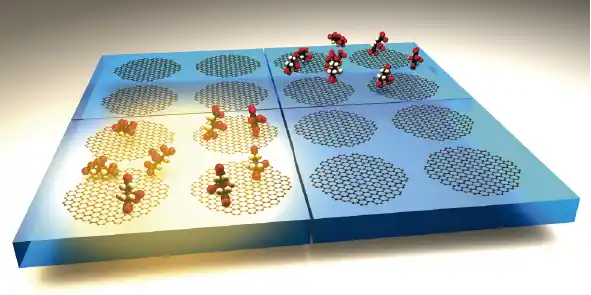افشین رشید
اُستادیار ؛ عضو هیات علمی دانشگاه آزاد اسلامی واحد علوم و تحقیقات تهران
615 یادداشت منتشر شدهNano Plasmonic Electrical Nano Structures (Surface Plasmon)

Note: In localized surface plasmons, the basis of interactions are nanoparticles, whose properties have been investigated in stimulating this mode of plasmonic waves. In surface plasmon polaritons, with the introduction of their working foundation, there is its field formulation and how these structures cross the diffraction limit.
Nano surface plasmon intensification is a phenomenon that occurs when polarized light hits a metal layer at the interface of the environment with different refractive indices. The techniques excite and detect collective oscillations of free electrons (known as surface nanoplasmons) through a configuration in which light is focused through a glass prism onto a metal film. and the subsequent reflection is detected. Interaction Nano plasmonic electrical nanostructures (surface plasmon) with radiation Electromagnetism is largely dictated by their free conduction electrons.Free electrons oscillate 180 degrees out of phase with respect to the driving electric field. As a result, most metals have a negative dielectric constant at optical frequencies, which causes, for example, very high reflectivity. Furthermore, at optical frequencies, the metal-free electron gas can sustain surface and volume charge density fluctuations, called nanoplasmons, with distinct resonant frequencies. The presence of plasmons is characteristic of the interaction of metal nanostructures with light at optical frequencies. Similar behavior cannot be easily reproduced in other spectral ranges using Maxwell's invariance.

In the structure Nanoplasmonic electrical nanostructures (surface plasmon) Since the material parameters change significantly with frequency . In particular, this means that model experiments with, for example, microwaves and larger metallic structures cannot replace experiments with metallic nanostructures at optical frequencies.< /span>Change Some properties such as conductivity in nano-transistors and electromagnetic properties in nano-wires may occur in the dimensions of only a few nanometers. Surface plasmon intensification in Structures with nanometer dimensions are called localized surface plasmon resonance. In suitably shaped (usually pointed) particles, localized charge accumulation associated with strongly enhanced optical fields can occur.Similarly, if the electron gas is confined in three dimensions, like a small particle, the overall displacement of the electrons relative to the positively charged lattice results in a restoring force, which in turn creates the particle. - Plasmon becomes special. Resonance depends on the geometry of the particle. Surface charge density fluctuations associated with surface nanoplasmons at the interface between a metal and a dielectric can cause strongly enhanced optical near fields that are spatially confined near the metal surface. have became.
Conclusion :
In localized surface plasmons, the basis of interactions are nanoparticles, whose properties have been investigated in stimulating this mode of plasmonic waves. In surface plasmon polaritons, with the introduction of their working foundation, there is its field formulation and how these structures cross the diffraction limit.